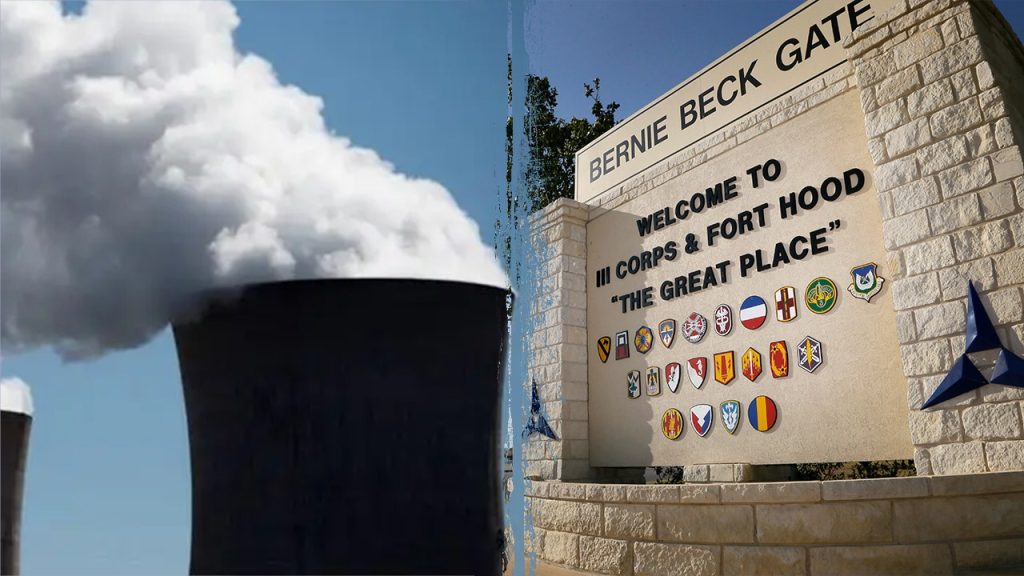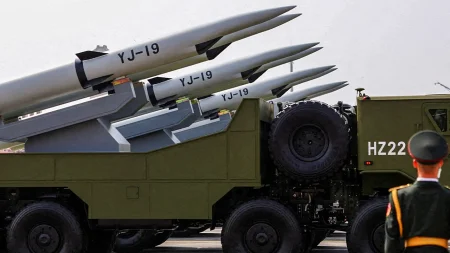The Army’s Nuclear Revolution: Powering the Future of Military Bases
In a groundbreaking initiative that could transform how the U.S. military powers its operations worldwide, the Army is launching an ambitious nuclear program aimed at generating reliable energy for bases across the globe. Known as the Janus Project, this effort will see “hundreds of millions” of dollars invested over the next five years to install next-generation commercial microreactors at military installations, particularly in remote or contested locations where traditional fuel supplies might be difficult to secure. Dr. Jeff Waksman, the Army official spearheading this revolutionary program, emphasizes that this isn’t merely a conceptual exercise but a “real hardware program” designed to deliver tangible energy capacity. Unlike previous nuclear initiatives that “peaked at the press release,” the Janus Project represents a concrete commitment to addressing one of the military’s most pressing logistical challenges: energy security in an increasingly contested world.
The military’s push toward nuclear power comes from a stark recognition of modern warfare’s evolving energy demands. As armed conflict increasingly relies on energy-intensive technologies like drones, directed-energy weapons, and artificial intelligence systems, the ability to maintain reliable power becomes critical to operational success. “Great power conflict is defined by who can move their resources around,” explains Waksman, highlighting that America’s ability to transport energy across vast oceans has never faced greater challenges, particularly in potential Indo-Pacific conflict scenarios with China. The limitations of current renewable technologies like solar, wind, and batteries make them insufficient for the military’s 24/7 power needs. “It is not possible with current technology to provide 24/7 power with solar, wind, and batteries,” Waksman notes. “So the only solution to the tyranny of fuel that exists now is nuclear power.” This initiative follows an executive order signed by President Donald Trump directing the Department of War to begin operating an Army-regulated nuclear reactor at a U.S. military installation by September 2028.
The Janus Program represents a significant departure from traditional government procurement models. Rather than directly owning and operating the reactors, the Army will partner with the Defense Innovation Unit and the Department of Energy’s national laboratories to oversee the design and testing of commercial microreactors that will be built and operated by private companies. To encourage private sector investment and innovation, the Army is adopting a milestone-based contracting approach inspired by NASA’s Commercial Orbital Transportation Services program—the same framework that helped launch today’s thriving commercial space industry by supporting companies like SpaceX and Boeing. By funding companies to reach key technical milestones rather than engaging in traditional procurement, the Army hopes to accelerate development, lower costs, and ultimately create a self-sustaining market for small reactors that could power both military and civilian infrastructure in the future.
The timeline for the Janus Project reflects both ambition and pragmatism in tackling the complex challenges of nuclear development. Construction of the first hardware isn’t expected before 2027—a pace Waksman describes as “light speed” for a nuclear program. Early efforts will focus heavily on addressing fundamental bottlenecks in materials science and supply chains. “In order to provide components that are viable under the conditions of a nuclear reactor, you need certified suppliers—and there just aren’t enough,” Waksman explains. “One of our goals is to help consolidate and strengthen the industrial base so multiple companies can use the same qualified suppliers.” The Army plans to work with multiple vendors, each expected to build at least two reactors—starting with prototypes that will be refined through operational experience. This approach allows for parallel development paths and creates healthy competition while building resilience into the program.
Beyond powering domestic military installations, the Janus Project aims to solve one of the most pressing logistical challenges in potential conflicts with adversaries like China: the vulnerability of energy supply chains across vast ocean distances. Guam provides a telling example—an island of tremendous strategic importance where more than 90 percent of electricity comes from imported oil delivered by foreign-flagged tankers traveling thousands of miles across increasingly contested sea lanes. “Having something that can provide power for years at a time without any resupply would be an absolute game-changer,” Waksman emphasizes. While the initial microreactors will remain on U.S. soil, the technology is being developed with future expeditionary applications in mind, potentially allowing deployed forces to operate with greater energy independence in contested environments where fuel convoys represent vulnerable targets.
The nuclear microreactors at the heart of the Janus Project represent a remarkable technological advancement compared to traditional nuclear plants. These smaller, factory-built power systems use the same basic principles as conventional nuclear reactors but at a fraction of the size, typically producing between one and 20 megawatts of electricity—sufficient to power a small town or a military installation. Unlike massive commercial reactors that can take a decade or more to construct, these microreactors are designed for rapid deployment, capable of being transported by truck or aircraft and installed within weeks. Their compact footprint and ability to operate for years without refueling make them ideal for military applications, but the Army sees broader potential. “The Army doesn’t want to be the only buyer of these reactors,” Waksman notes. “If we can get industry to the sixth or seventh unit, where they can sell to commercial partners, then we’ve succeeded.” This vision of creating a vibrant commercial market extends the impact of the Janus Project beyond military applications, potentially revolutionizing how remote communities, disaster areas, and industrial facilities meet their energy needs with reliable, carbon-free power in the decades to come.















